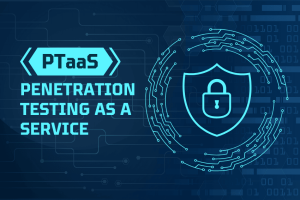To secure your Wi-Fi router is one of the most crucial steps you can take to safeguard your home in our increasingly connected world. Your Wi-Fi network is the portal to your personal life whether it be with smart thermostats, smart smoke alarms, security cameras; all of these smart devices connect into your Wi-Fi network.
It will have the potential of subjecting you to hackers, theft of your information and worst still, giving residential intruders a chance to eavesdrop on your operations or get into an attack through your own connection. No need to stress, though, you do not need tech expertise to secure it.
Here we will navigate through step-by-step best practices using credible sources that will enable you to secure your set-up and lock down your home. When configuring a new router or hardening an existing one the procedure follows some rudimentary steps which may have profound effect.
We will discuss all you need to know about encryption including some of the fine tuning that can be done, to give your network as much security as possible. At the end, you will be certain that your Wi-Fi has been built strong against some of the typical threats.
Understanding How Your Home Wi-Fi Network Works
Before diving into security measures, it is helpful to grasp the basics of how your Wi-Fi router operates. Your router provides the pathway between your house devices and the Internet through your ISP (Internet Service Provider). It broadcasts a signal that is connected to phones, laptops, and smart TVs among devices. Without the security of this signal one can tune to it and in the process end up with illegal access.
Many routers are set up with palatable settings that are more user friendly than secure. As an example, they could contain easy to guess admin passwords or old encryption protocols. Hackers use these weak points to get password crackers to crack passwords or find out suitable vulnerabilities in the ancient and un-updated firmware. Knowing this, the first step to secure your Wi-Fi router is recognizing these risks and addressing them proactively.
Step-by-Step Guide to Secure Your Wi-Fi Router
Here’s a clear, actionable guide to protect your home network. These steps are designed to be straightforward, even if you’re not a tech expert.
Encrypt Your Network: The Foundation of Wi-Fi Security
Encryptions are comparable to having a lock at your front door, it is the main defense against intruders. In absence of it, your information is transferred as plain text and anyone can easily access the passwords, mail or browsing logs.
WPA3 Personal is the current-day gold standard and has been released in 2021 as the latest encryption standard that is said to be more secure than previous standards. Enable the WPA3 at once, as long as your router can support it. Degrading to WPA2 Personal is a good way to go with older models since those are also solid but not very high-tech. Never use login with WPA or WEP which are outdated, and the codes can easily be broken.
To enable encryption:
- Log into your router’s admin panel (usually by typing 192.168.1.1 or similar into your browser).
- Navigate to the wireless settings section.
- Select WPA3 or WPA2 as the security mode.
- Set a strong passphrase—more on that later.
You may have to upgrade your router as it is not able to support these. The new ones can not only assist you in terms of encryption but also, respond to the level of all your devices.
Change Your Router’s Default Settings
Routers may use common usernames (such as admin), and common passwords, which are the same across all models. These defaults are open to hackers, and it will take them no time at all to take control unless you change them.
Start by altering the admin credentials:
- Access the router’s settings page.
- Find the administration or system section.
- Update the username and password to something unique and complex—at least 12 characters, mixing letters, numbers, and symbols.
Next rename the SSID (Service Set Identifier) of your network, This is the name that is displayed on connecting devices. Do not use your name, address, or brand of a router as it provides excessive bundles of information to potential attackers. Choose something that is not dangerous yet sticky.
Also, you can hide your SSID broadcast. This ensures that your network cannot be discerned easily by scanners but can be discovered by an average hacker. It is added protection, but not a foolproof one.
In the process, switch around the Wi-Fi password not the admin password. This passphrase ought to be lengthy (16 + characters) and not a dictionary word. Make it use a password manager to be kept in a secure place.
Keep Your Router Firmware Up to Date
Firmware is the software that runs your router, and like any software, it may contain bugs which hackers can take advantage of. Security updates designed to close these vulnerabilities are released by manufacturers and have new features.
Keep them up to date by checking every once in a while- preferably once a month. Some routers support automatic updates; use this setting in case it exists. The way to do it manually:
- Visit the manufacturer’s website (e.g., TP-Link, ASUS, Netgear).
- Enter your model number and download the latest firmware.
- Upload it via the router’s admin panel under the firmware update section.
If your ISP has given you a router, call them to be sure of whether the updates are automatically pushed on their end. Outdated firmware is a common entry point for attacks, so staying current is non-negotiable to secure your Wi-Fi router.
Turn Off Risky Features: Remote Management, WPS, and UPnP
Security liabilities are some of the convenience features. Remote management offers you the advantage of controlling your router even outside your house, but it is also a door to remote hackers. Turn it off except when you have to.
The Wi-Fi Protected Setup (WPS) enables hardware to make easy connections and connection utilizing a push-button combination or PIN yet is prone to brute-force assaults. Switch it off in the wireless configuration- switch it on only when you require ever so briefly.
Universal Plug and Play (UPnP) makes it easy to make it so your devices find one another on their own, which is fantastic when it comes to playing games or streaming, but it allows outside parties to access your network. To shut down port opening by unauthorized accounts, disable it at the advanced settings.
Others to eliminate: Telnet and SSH in case you do (they can open access to commands that are often not secure). Additional protection can be performed by disabling WAN and activating DNS Rebind protection to ASUS users.
Set Up a Guest Network for Added Isolation
A guest network is essential to you when you have regular guests or IoT devices. It generates a different Wi-Fi signal that has a different password that exposes the guests to your main network.
Benefits include:
- Preventing guests’ potentially infected devices from spreading malware.
- Limiting access to your personal files and devices.
- Easier password sharing without compromising your primary credentials.
To set it up:
- In your router settings, look for “Guest Network” or “Virtual Access Point.”
- Enable it, choose a distinct SSID, and set a simple but unique password.
- Enable isolation features to block guests from seeing or accessing other devices.
The segmentation of this network is particularly practical in a household where different people use the internet, and it will help cut down the risk associated with one of the devices being attacked.
Enable Your Router’s Firewall and Additional Protections
Most routers include a firewall, which serves as the filter of all the incoming threats. Make sure it is enabled since it should be turned on by default but better to check the security or the advanced settings.
For extra layers:
- Activate SPI (Stateful Packet Inspection) if available, which examines data packets more thoroughly.
- Enable AiProtection or similar built-in security suites (common in ASUS routers) for real-time threat detection.
- Avoid using DMZ (Demilitarized Zone) unless you’re hosting servers; it exposes devices fully to the internet.
Another one is MAC address filtering: It forms a whitelist of permitted devices, their unchanging hardware IDs. Although it is not unbreakable, it constitutes an additional obstacle in the road of the intruder.
Use Strong Passwords and Password Management
We have mentioned this once, but we should repeat it: The bane of many networks is weak passwords. Choose complexity and length–capital letters, lower-case letters, numerals and other symbols.
They can be created and recalled by using a tool such as a password manager (e.g. LastPass or Bitwarden). Do not use the same passwords in multiple accounts and change passwords regularly – in case of a breach.
Devices such as computer, smartphone, and tablets, with families when you can log in with your password and not share it. This retains control within the circle of trust and reduces exposure.
Protect Your Devices and Educate Users
When it comes to securing the router, you are halfway through; your connected devices must also be secured. Installing antivirus on computers and mobiles- malware-bytes is an option. Ensure that all devices are up to date to patch vulnerability.
User education is key, often called “Layer 8” security. Teach family members to:
- Avoid clicking suspicious links or downloading unknown apps.
- Recognize phishing attempts, like fake calls from “PayPal.”
- Use VPNs for public Wi-Fi or sensitive activities like banking.
This can be combined with deploying a network wide filtering device such as Pi-hole and providing additional pro-active security by blocking known bad sites at the router itself.
Advanced Settings for Enhanced Security
For those comfortable digging deeper:
- Switch to HTTPS to log into the router admin page to encrypt your session.
- Restrict admin access to specific IP addresses, limiting it to your home devices.
- Disable UPnP if not needed, as mentioned earlier.
- For wireless, set up MAC filtering to only allow known devices.
If you’re tech-savvy, consider a DIY firewall like pfSense on an old PC for ultimate control. But for most, sticking to router built-ins suffices.
Network Segmentation and Router Options
To go further with security, separate your network. Utilize two or more routers: One should be with high security requirements (work) and the other one of low security requirements. This makes the areas of isolation and a break in any section will not have an impact on the other section.
Set up a high spec router with other functions or install a firewall device. In case you already have a router, but it does not offer alternatives, it is a good idea to obtain a new one with WPA3 or auto-updates availability.
Logging Out and Monitoring Your Network
Always log out once you have changed anything in server to finish off the session in the admin. Always monitor associated devices connected on the router dashboard to identify what is not familiar- disconnect and research on it in case it is required.
Applications such as router applications are able to display alerts when a new connection or an update in the firmware is available so that you do not have to continually check.
Conclusion: Maintaining a Secure Wi-Fi Environment
Securing your Wi-Fi router will never be single-time control; it would always be a process. These are some of the steps including encrypting your network, updating firmware, blocking risky applications and features and instructing your users to minimize risk and effectively secure your home. Again, you have an aim, which is to ensure that hackers find it difficult to mess with your set up. Be alert, and all your online life will be significantly protected.
Should problems arise, refer to the manual of your router or its manufacturer. To find personalized advice, it may help to use such resources as the FTC guide or CISA guides. When you take these steps, you are assured of those conveniences of having a connected home that you can enjoy.
FAQs
Why is it important to secure your Wi-Fi router?
Data may be stolen, unwanted people access your data, or somebody uses your network to engage in criminal activities because of an unsecured router. Protection helps keep your privacy as well as your devices safe.
How often should I update my router’s firmware?
Check once a month or make automatic. The vulnerabilities that hackers take advantage of are fixed in updates.
What’s the difference between WPA2 and WPA3?
WPA3 is more secure against brute-force attack than WPA2, and it has more encryption that renders it difficult to crack by hackers.
Can I secure my Wi-Fi without technical knowledge?
Yes, the majority of steps are easy modifications to the setting up page of their router. Use apps or follow manufacturer instructions to make it easy on your part.
What if my router is old and doesn’t support WPA3?
Here is the opportunity to buy a newer model. With older routers, even patchable vulnerabilities can be dangerous as they can become difficult to patch at all.
Should I use a VPN on my home network?
The outgoing traffic is encrypted on a VPN, which can be applied to privacy. Look at router level VPN support to cover entire network.
How do I know if someone is hacking my Wi-Fi?
Signs are low speeds, unfamiliar devices to you in the list of network, or unexpected data consumption. See what is going on and change passwords when in doubt.


